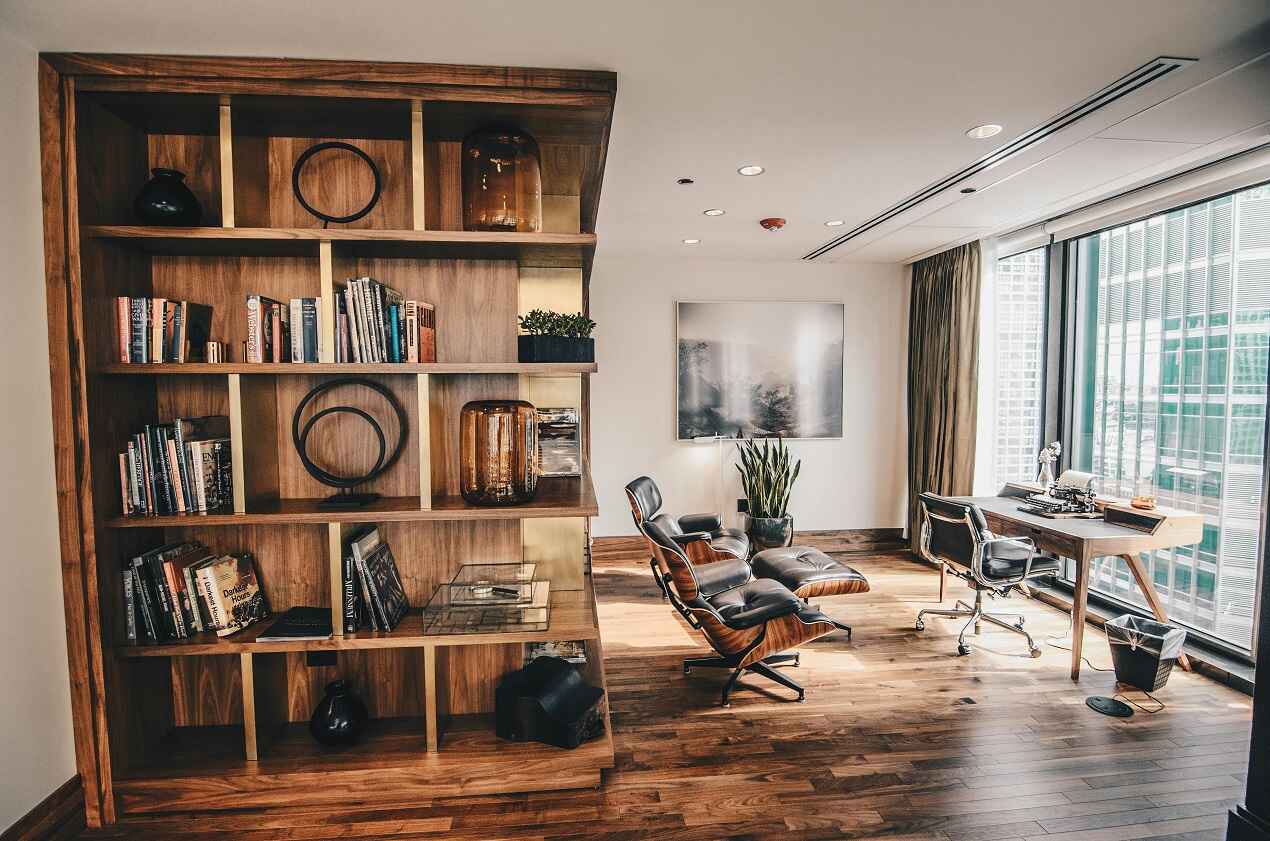A welcoming workspace does more than look tidy. It lowers stress, supports posture, and makes long stretches of focus feel easier. Small interior upgrades can shift the mood of a room in an afternoon – no full remodel required.
Soft Layers That Quiet The Room
The fastest wins come from choices that soften edges, warm the palette, and invite movement. A room that fits daily routines will feel personal without clutter. For compact layouts, a corner layout often unlocks surprising comfort when balanced with storage and light. One example is using a corner stand up desk as the anchor for an L-shaped plan, weaving in shelves and a chair nook so the setup feels like part of the home rather than a tucked-away station.
Hard surfaces bounce sound and fatigue the eyes. Soft layers add calm and help the space read as residential, not corporate. Start with a dense, low-pile rug that stabilizes a chair and dampens roll noise. Add textured curtains to absorb echo and control glare while keeping daylight. Upholstered seating – an accent chair or a petite bench – offers a second posture for reading or calls.
Texture matters as much as color. Boucle, wool blends, and washed linen introduce depth without heavy patterns. Throw pillows in two related tones feel intentional and prevent the “one-off” look. A knit throw folded over the chair back shifts the visual temperature from task-oriented to lived-in.
Light That Flatters Focus
Layered lighting keeps energy steady across the day. Overhead fixtures provide ambient fill, so corners are not gloomy. A focused task lamp with a wide shade reduces screen contrast, and a small backlight behind the monitor softens the halo effect that tires the eyes. Position the desk perpendicular to the windows to avoid squinting. Sheer shades break up midday glare while preserving view and rhythm.
Color temperature is a gentle tool. Warm-neutral bulbs around 3000–3500K feel domestic and clear. Keep consistency across fixtures to prevent the patchwork effect that distracts attention. Dimmer switches add control for evening work, when softer light helps the room transition back into a living space.
Personalized Storage That Stays Uncluttered
Storage is where function meets character. Open shelves display books, framed prints, and greenery, while closed cabinets hide routers, cables, and paper stock. Use a mix to keep the view composed. A shallow wall rail can hold headphones, a calendar, and a small catch-all tray. Drawer inserts keep pens and adapters in reach rather than scattered.
A single short list keeps order sticky:
- Keep daily tools within arm’s reach. Weekly tools within two steps.
- Label two bins only – “In Progress” and “Supplies” – to prevent drift piles.
- Route every cable to one grommet, then down a leg or wall channel for a clean backdrop.
- Reserve one empty shelf. Space to breathe stops future clutter creep.
Corners That Work Like Rooms
Corners can feel cramped or become the most comfortable zone in the house. The difference is how the triangle of desk, chair, and light is drawn. An L-shape frees the primary sightline and keeps monitors centered, which reduces neck rotation. A plant at the outside corner adds a soft edge and screens the view of cables. When space is tight, a corner layout turns dead space into a compact command center that still looks domestic.
If standing intervals are part of the routine, choose surfaces that adjust smoothly and do not dominate the room. The goal is a graceful switch between postures – stand for note review, sit for deep typing, step to the reading chair for calls – all within one visually coherent corner.
Color, Scent, And Sound As Gentle Cues
Finishing touches guide the nervous system. Desaturated paint with a hint of warmth keeps walls calm under changing daylight. A deeper accent behind the screen anchors the workstation and reduces contrast fatigue. Greenery adds micro-movement and natural texture; trailing plants soften shelves and clean up vertical lines.
Scent and sound act as subtle timers. A mild diffuser with citrus or cedar can signal “on” hours, then shut off in the evening. A soft soundscape masks hallway noise without feeling clinical. Thick door seals or a fabric draft stopper at the threshold can cut sharp sounds while keeping the door you already own.
Small Comforts, Big Payoff
Comfort is often a set of five-minute fixes that add up across the week. A footrest under the desk eases the lower back. A slim anti-fatigue mat near the standing position protects the calves. A framed photo or two – placed just outside the webcam’s view – personalizes the scene without stealing attention. A coaster and water carafe reduce trips that break flow.
Movement remains the most home-like habit. Create a tiny walking loop from desk to window to bookcase and back. Hooks near the door keep a lightweight cardigan and noise-reducing headphones at hand, so temperature dips and calls are handled without rummaging.
The Workspace You Look Forward To Using
Home-ready workrooms feel warm, forgiving, and easy to reset. Soft layers quiet the boxy sound of hard finishes. Light is tuned for eyes, not just lumens. Storage blends display and discretion, so personality shows without mess. Corners become efficient micro-rooms that invite posture changes. Color, scent, and sound give calm rhythm to the day.
When these small interior upgrades work together, the workspace stops feeling like a temporary fix. It becomes a place that meets real routines – supportive, human, and easy to return to tomorrow.

